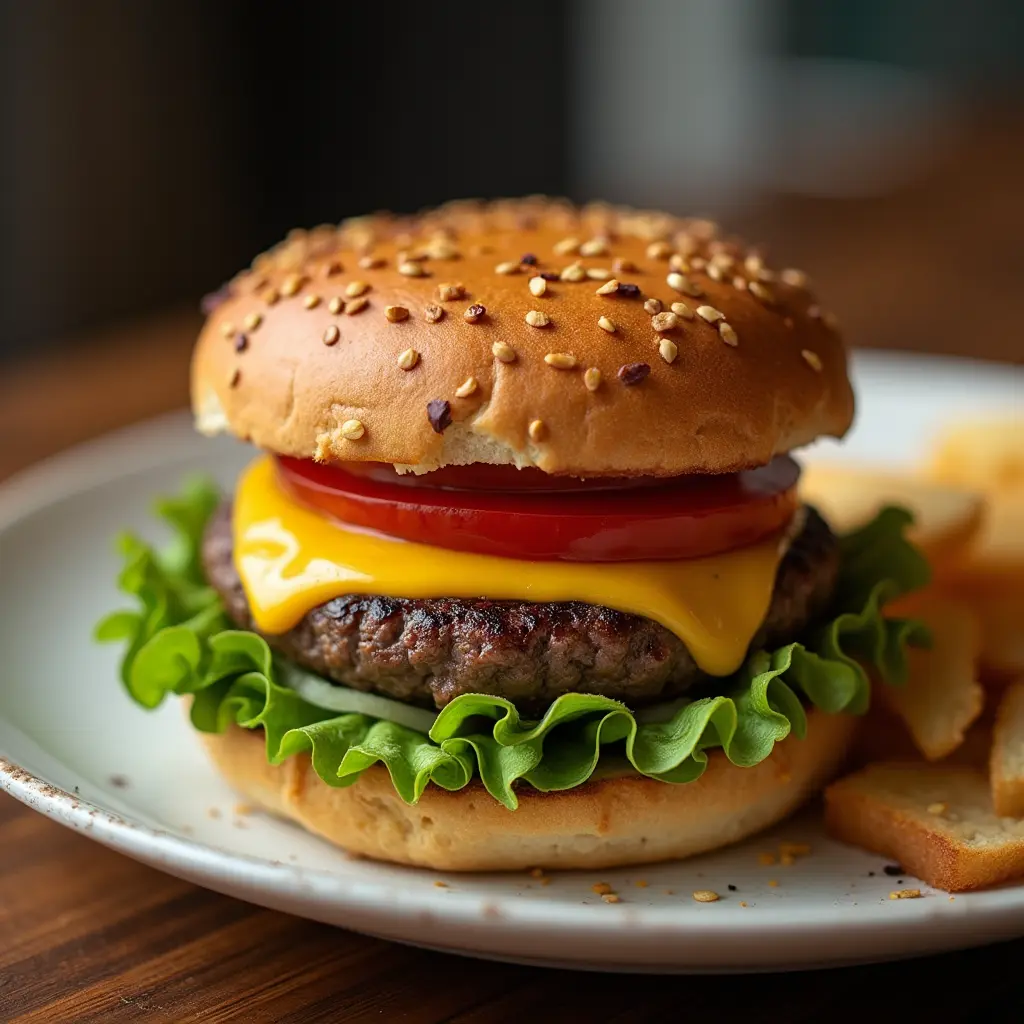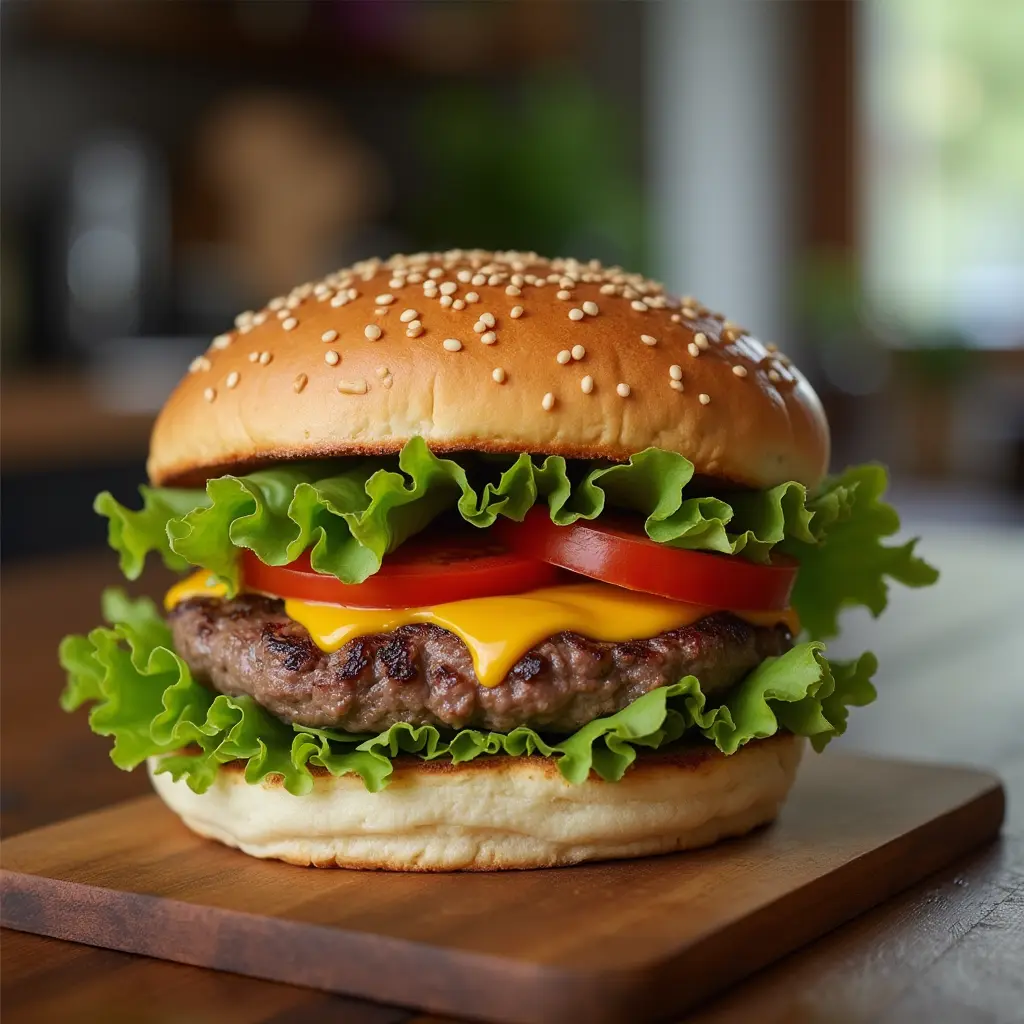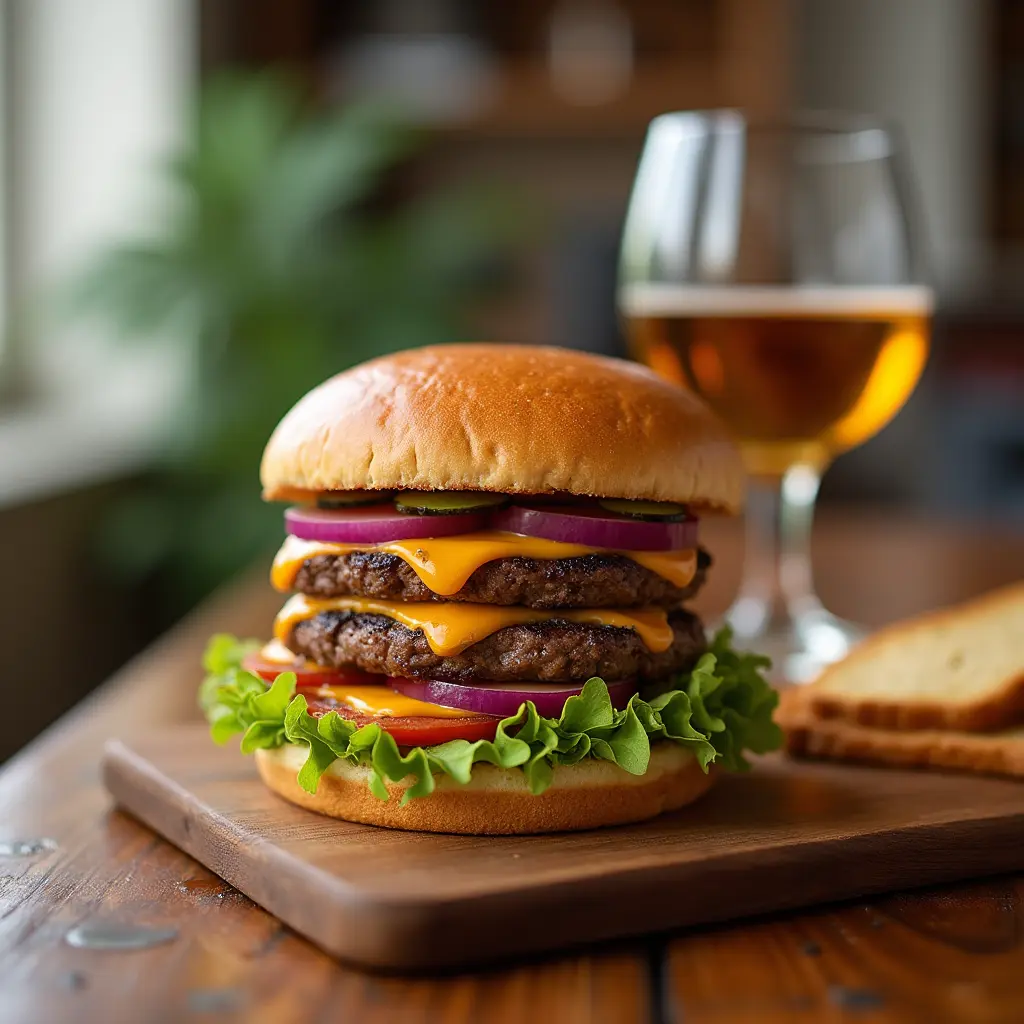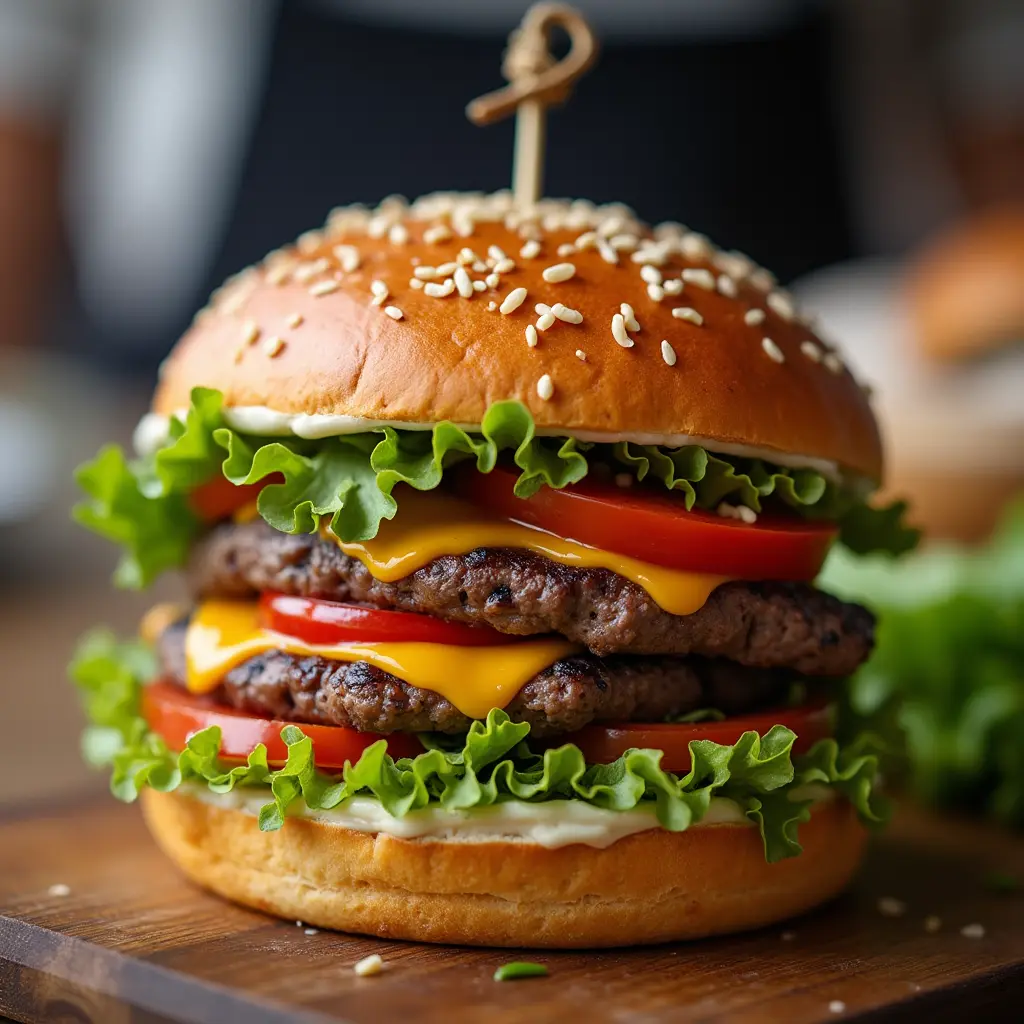Create the iconic fast-food experience in your own kitchen with these expert tips and tricks
The Allure of the Golden Arches Flavor at Home
There’s something undeniably captivating about the taste of a McDonald’s burger. That specific blend of flavors has become embedded in our collective food memory, making it one of the most recognized tastes worldwide. But what if you could recreate that same magic in your own kitchen? The quest to make a perfect McDonald’s copycat burger has become something of a culinary holy grail for home cooks looking to satisfy their fast-food cravings without leaving the house.
The appeal goes beyond mere convenience. Making your own version allows you to control the quality of ingredients, adjust flavors to your preference, and even make healthier modifications if desired. Plus, there’s an undeniable satisfaction in cracking the code of such a famous food item.
In this comprehensive guide, we’ll walk through everything you need to know to create a burger that captures the essence of the McDonald’s experience while potentially improving upon it with your personal touch.
Breaking Down the McDonald’s Burger Experience
Before we dive into recipes and techniques, it’s helpful to understand what makes a McDonald’s burger so distinctive. The company has spent decades perfecting their formula, and several key elements contribute to their signature taste:
- The thin, quick-cooking beef patties
- The specific seasoning blend
- The steaming technique that gives the buns their soft texture
- The exact ratio of condiments and toppings
- The assembly method that ensures every bite contains all flavor components
What’s fascinating is how these simple elements come together to create something immediately recognizable. When you bite into a McDonald’s burger, you’re not just tasting food—you’re experiencing decades of careful flavor engineering.
Essential Ingredients for Your McDonald’s Copycat Burger

To create an authentic McDonald’s copycat burger, you’ll need to gather the right ingredients. Here’s what you should have on hand:
The Beef
- 80/20 ground beef (80% lean, 20% fat)
- Salt and pepper (McDonald’s famously seasons their patties after cooking, not before)
The Buns
- Plain hamburger buns with sesame seeds on top
- A bit of butter for toasting
The Condiments
- Yellow mustard
- Ketchup
- Finely diced white onion
- Dill pickle slices
- American cheese slices
Notice how basic these ingredients are—part of McDonald’s magic is creating something memorable from simple components. The quality of these ingredients matters, but it’s the preparation and assembly that truly makes the difference.
The Secret Behind McDonald’s Burger Patties
The heart of any McDonald’s copycat burger is, of course, the patty itself. Here’s how to get it right:
Making the Perfect Patty
- Start with cold ground beef straight from the refrigerator
- Form patties that are very thin—about 1/8 inch thick and around 4 inches in diameter
- Use a burger press if available, or place the meat between wax paper and press down firmly
- Make a slight indentation in the center of each patty to prevent it from puffing up during cooking
What makes McDonald’s patties unique is their cooking method. They’re not grilled but rather cooked on a flat-top griddle. This gives them that distinctive crust while keeping the inside juicy despite their thinness.
The Cooking Technique
- Heat a large, flat pan or griddle to high heat
- Cook the patties for approximately 1-2 minutes per side
- Do not press down on the patties while cooking (contrary to what you might see in some videos)
- Season with salt and pepper immediately after flipping
- Add cheese in the last 30 seconds of cooking and cover briefly to melt
This quick-cook method is essential to preserving the juiciness of such a thin patty. Any longer on the heat, and you’ll end up with a dry burger that misses the mark on replicating the McDonald’s experience.

Assembling Your McDonald’s Copycat Burger Like a Pro
The assembly order of a McDonald’s burger is actually quite specific and contributes significantly to the overall taste experience. Here’s the correct layering from bottom to top:
- Bottom bun
- Mustard (just a small squirt)
- Ketchup (again, not too much)
- Finely diced onion (McDonald’s onions are rehydrated, but fresh finely diced onions work well)
- Pickle slices (typically 2-3 slices)
- Beef patty with melted cheese
- Top bun
For a Big Mac-style McDonald’s copycat burger, you’ll also need to add the iconic middle bun layer and special sauce, but we’ll cover that variation in detail later.
The key is applying condiments in the right amounts—McDonald’s is surprisingly restrained with their condiment application, which allows the beef flavor to remain prominent.
The Special Sauce: McDonald’s Most Guarded Secret
No article about a McDonald’s copycat burger would be complete without discussing the famous “special sauce” used on the Big Mac. While McDonald’s keeps the exact formula under wraps, food enthusiasts have come remarkably close to replicating it.
Homemade Special Sauce Recipe
- 1/2 cup mayonnaise
- 2 tablespoons French dressing or Catalina dressing
- 4 teaspoons sweet pickle relish
- 1 tablespoon finely minced white onion
- 1 teaspoon white vinegar
- 1 teaspoon sugar
- 1/8 teaspoon salt
Simply mix all ingredients thoroughly and refrigerate for at least an hour before using to allow the flavors to meld together.
What makes this sauce special is the balance between creamy, tangy, and sweet elements. The combination of mayonnaise and French dressing creates the distinctive pink color, while the pickle relish adds texture and a touch of sweetness.
The Bun: More Important Than You Think
The bun of a McDonald’s burger is often overlooked but plays a crucial role in the overall experience. McDonald’s uses a specific steaming technique that gives their buns that characteristic softness while still maintaining enough structure to hold the burger.
Replicating the McDonald’s Bun Experience
- Choose plain, sesame-topped hamburger buns that are light and airy
- Lightly butter the cut sides of the buns
- Toast them on a pan until just golden (about 10-15 seconds)
- After toasting, cover them with a lid for about 10 seconds to steam slightly
This combination of toasting and steaming creates that perfect McDonald’s bun texture: slightly crisp on the cut side but soft and pillowy throughout.
Common Mistakes When Making McDonald’s Copycat Burgers
Even with the right ingredients, there are several pitfalls that can prevent your McDonald’s copycat burger from tasting authentic:
- Using patties that are too thick
- Over-seasoning the meat before cooking
- Adding too many condiments
- Using the wrong type of cheese (only American cheese will give you that authentic melt)
- Cooking the patties for too long
- Using artisanal or brioche buns instead of simple commercial buns
Remember, McDonald’s success comes from simplicity and consistency, not complexity. When in doubt, go with the simpler option.
Variations on the Classic: Beyond the Basic McDonald’s Burger

Once you’ve mastered the basic McDonald’s copycat burger, you might want to try recreating some of their other famous offerings:
The Quarter Pounder
- Use 4 ounces of beef per patty instead of the standard 1.6 ounces
- Cook slightly longer (but still keep it juicy)
- Add ketchup, mustard, onions, and pickles
- Use slightly larger buns
The Big Mac
- You’ll need an extra middle bun section (cut a third bun horizontally)
- Two thin patties
- Special sauce (as described earlier)
- Shredded lettuce
- Minced onion
- American cheese
- Dill pickle slices
The key to an authentic Big Mac is getting the ratio of sauce to other ingredients just right, and making sure the middle bun doesn’t get soggy.
Health-Conscious Adaptations for Your Copycat Burger
One advantage of making your own McDonald’s copycat burger is the ability to make it healthier without sacrificing too much flavor. Here are some modifications to consider:
- Use leaner beef (85/15 or even 90/10)
- Opt for whole wheat buns
- Add extra vegetables like tomato and lettuce
- Use reduced-sugar ketchup
- Try a half-beef, half-mushroom blend for the patty to reduce meat consumption
While these changes will move your burger further from an exact McDonald’s replica, they might create a version you actually prefer—one that satisfies the craving while aligning better with your dietary preferences.
The Science Behind the Craving
What makes us crave a McDonald’s burger so intensely? Food scientists have identified several factors:
- The ideal fat-to-protein ratio in the beef
- The perfect balance of salt, sweet, and umami flavors
- The textural contrast between the soft bun and the slightly crisp patty
- The memory associations many of us have with McDonald’s from childhood
Understanding these elements can help you perfect your McDonald’s copycat burger, focusing on the sensory experiences that trigger that satisfaction center in the brain.
Serving Suggestions: Complete the McDonald’s Experience
A burger doesn’t exist in isolation—to truly recreate the McDonald’s experience, consider these accompaniments:
- Thin-cut french fries (double-fried for crispiness)
- A sweet carbonated beverage in a large cup with lots of ice
- Paper wrapping for the burger to capture that takeout feel
- A small paper bag to serve it in
These theatrical elements might seem silly, but they actually enhance the overall experience through psychological association.
Frequently Asked Questions
What seasoning does McDonald’s use on their burgers?
McDonald’s keeps their exact seasoning blend confidential, but we know it consists primarily of salt and pepper. The key difference is when they apply it—McDonald’s seasons their patties after flipping rather than mixing seasonings into the meat. This creates a more distinct flavor profile on the surface of the patty. Some former employees have suggested there might be a touch of garlic powder in the mix, but the company has never confirmed this.
What makes McDonald’s burgers taste different?
Several factors contribute to McDonald’s distinctive burger taste. First, they use a specific blend of beef cuts. Second, they cook their patties on a flat-top grill rather than over an open flame, allowing the patties to cook in their own fat. Their cooking process also includes a steaming step that helps distribute flavors. Finally, the specific ratio and assembly order of condiments creates their signature taste profile that remains consistent worldwide.
How does McDonald’s make their burger patties?
McDonald’s patties are made from 100% beef without fillers or additives. The beef is ground to a specific consistency and formed into thin, uniform patties at their production facilities. At the restaurant, these frozen patties are cooked on a flat grill at high temperature (about 350°F) for approximately 40 seconds per side. They’re seasoned after flipping with their salt and pepper blend, and no press is used during cooking to preserve juiciness.
What is the secret burger in McDonald’s?
The most famous “secret” item at McDonald’s is the Land, Air, and Sea Burger, which combines a Big Mac, McChicken, and Filet-O-Fish into one massive sandwich. Another popular secret menu item is the McGangBang, which places a McChicken between the patties of a double cheeseburger. While not officially recognized on the menu, many McDonald’s employees are familiar with these creations and can make them on request. However, availability may vary by location, and some restaurants may not accommodate such special orders.
Final Thoughts: Why Homemade Versions Often Taste Better
There’s something deeply satisfying about successfully recreating a famous food item at home. With your McDonald’s copycat burger, you may find that your version actually tastes better than the original in some ways. The freshness of the ingredients, the care in preparation, and the customizations to suit your exact preferences can elevate the experience.
Moreover, the process of making the burger connects you more deeply to your food. Rather than being a mysterious product that appears in a paper wrapper, it becomes something you understand and have mastered.
So the next time a fast-food craving strikes, consider heading to your kitchen instead of the drive-thru. With these techniques and insights, you’re well-equipped to create a McDonald’s copycat burger that might just become your new gold standard.
